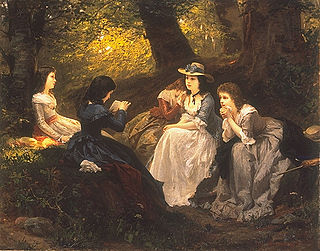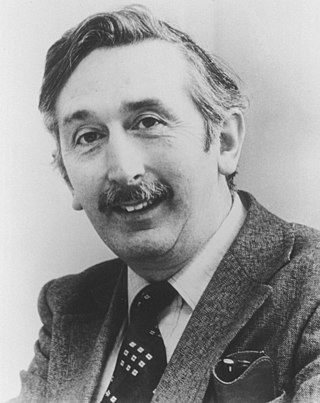Related Research Articles

The Ig Nobel Prize is a satiric prize awarded annually since 1991 to celebrate ten unusual or trivial achievements in scientific research. Its aim is to "honor achievements that first make people laugh, and then make them think." The name of the award is a pun on the Nobel Prize, which it parodies, and on the word ignoble.

A copycat suicide is defined as an emulation of another suicide that the person attempting suicide knows about either from local knowledge or due to accounts or depictions of the original suicide on television and in other media. The publicized suicide serves as a trigger, in the absence of protective factors, for the next suicide by a susceptible or suggestible person. This is referred to as suicide contagion.

Sir Godfrey Newbold Hounsfield was a British electrical engineer who shared the 1979 Nobel Prize for Physiology or Medicine with Allan MacLeod Cormack for his part in developing the diagnostic technique of X-ray computed tomography (CT).
Robert Allan Humphreys (1930–1988), known as Laud Humphreys, was an American sociologist and Episcopal priest. He is noted for his research into sexual encounters between men in public bathrooms, published as Tearoom Trade (1970) and for the questions that emerged from what was overwhelmingly considered unethical research methods. He influenced generations of scholars who research issues related to sexuality and sexual identity.
A suicide method is any means by which a person may choose to end their life. Suicide attempts do not always result in death, and a non-fatal suicide attempt can leave the person with serious physical injuries, long-term health problems, and brain damage.

Suicide prevention is a collection of efforts to reduce the risk of suicide. Suicide is often preventable, and the efforts to prevent it may occur at the individual, relationship, community, and society level. Suicide is a serious public health problem that can have long-lasting effects on individuals, families, and communities. Preventing suicide requires strategies at all levels of society. This includes prevention and protective strategies for individuals, families, and communities. Suicide can be prevented by learning the warning signs, promoting prevention and resilience, and committing to social change.
A suicide pact is an agreed plan between two or more individuals to die by suicide. The plan may be to die together, or separately and closely timed.

Roy Jay Glauber was an American theoretical physicist. He was the Mallinckrodt Professor of Physics at Harvard University and Adjunct Professor of Optical Sciences at the University of Arizona. Born in New York City, he was awarded one half of the 2005 Nobel Prize in Physics "for his contribution to the quantum theory of optical coherence", with the other half shared by John L. Hall and Theodor W. Hänsch. In this work, published in 1963, he created a model for photodetection and explained the fundamental characteristics of different types of light, such as laser light and light from light bulbs. His theories are widely used in the field of quantum optics. In statistical physics he pioneered the study of the dynamics of first-order phase transitions, since he first defined and investigated the stochastic dynamics of an Ising model in a paper published in 1963. He served on the National Advisory Board of the Center for Arms Control and Non-Proliferation, the research arms of Council for a Livable World.

Edwin S. Shneidman was an American clinical psychologist, suicidologist and thanatologist. Together with Norman Farberow and Robert Litman, in 1958, he founded the Los Angeles Suicide Prevention Center where the men were instrumental in researching suicide and developing a crisis center and treatments to prevent deaths.

Suicide is the act of intentionally causing one's own death. Mental disorders, physical disorders, and substance abuse are risk factors.
Daniel James Simons is an experimental psychologist, cognitive scientist, and Professor in the Department of Psychology and the Beckman Institute for Advanced Science and Technology at the University of Illinois.
Researchers study Social media and suicide to find if a correlation exists between the two. Some research has shown that there may be a correlation.
Historically, suicide terminology has been rife with issues of nomenclature, connotation, and outcomes, and terminology describing suicide has often been defined differently depending on the purpose of the definition. A lack of agreed-upon nomenclature and operational definitions has complicated understanding. In 2007, attempts were made to reach some consensus. There is controversy regarding the phrase "to commit suicide" as some view it as implying negative moral judgment and having an association with criminal or sinful activity.
Diego De Leo is an Italian professor, doctor and psychiatrist. Until August 2015, he was the director of the Australian Institute for Suicide Research and Prevention (AISRAP), World Health Organization Collaborating Centre on Research and Training in Suicide Prevention at Griffith University in Brisbane, Australia. He has been on the editorial board of Crisis: The Journal of Crisis Intervention and Suicide Prevention since 1990, was its Editor-in-Chief from 2008 to early 2018, and is now Editor Emeritus of the journal. He is frequently quoted in Australian news reports as an expert on suicide prevention.
Professor Philip Michael Stell was a British surgeon and historian. After a career in otolaryngology he retired early from his chair at the University of Liverpool and developed a second career as a medieval historian based in York; he was appointed MBE in 2004 "for services to history".
The relationship between antidepressant use and suicide risk is a subject of medical research and has faced varying levels of debate. This problem was thought to be serious enough to warrant intervention by the U.S. Food and Drug Administration to label greater likelihood of suicide as a risk of using antidepressants. Some studies have shown that the use of certain antidepressants correlate with an increased risk of suicide in some patients relative to other antidepressants. However, these conclusions have faced considerable scrutiny and disagreement: A multinational European study indicated that antidepressants decrease risk of suicide at the population level, and other reviews of antidepressant use claim that there is not enough data to indicate antidepressant use increases risk of suicide.
Suicide in music subcultures refers to the relationship between members of a subculture of music fans and the act of suicide. Researchers have examined the relationship between heavy metal subculture, goth subculture, emo subculture, and opera subculture and suicide.

Mass shooting contagion theory is the studied nature and effect of media coverage of mass shootings and the potential increase of mimicked events. Academic study of this theory has grown in recent years due to the nature of mass shooting events, frequency of references to previous rampage shooters as inspiration and the acquisition of fame using violence, particularly in the United States. The Columbine High School massacre is cited as being the first shooting to receive nationwide 24/7 publicity, giving both shooters near instant widespread infamy, and thus often is claimed by researchers as being a source of inspiration for would be copycat mass shooters.
Jacques Benveniste was a French immunologist born in Paris. In 1979, he published a well-known paper on the structure of platelet-activating factor and its relationship with histamine. He was head of allergy and inflammation immunology at the French biomedical research agency INSERM.
Wayne Velicer was an American psychologist known for his research in quantitative and health psychology. He taught at the University of Rhode Island from 1973 until his death in 2017. He worked with James O. Prochaska to help to found the University of Rhode Island's Cancer Prevention Research Center, of which he subsequently served as co-director.
References
- 1 2 Communications, Wayne State University Web. "Steven Stack". clasprofiles.wayne.edu. Retrieved 2018-04-12.
- 1 2 Young, Stephen (2017-05-05). "A Rash of Murder-Suicides Highlights the Lack of Understanding Why They Happen". Dallas Observer. Retrieved 2018-04-12.
- ↑ Szalavitz, Maia (2009-04-23). "Is Copycat Behavior Driving Murder-Suicides?". Time. Retrieved 2018-04-12.
- ↑ "Celebrity Suicide Prompts Copycats". WebMD. 2003-03-20. Retrieved 2018-04-12.
- ↑ KATZ, JESSE (1997-05-20). "Executions in Texas: No Big Deal". Los Angeles Times. ISSN 0458-3035 . Retrieved 2018-04-12.
- ↑ Adam, David (2004-10-01). "Ig Nobel awards pay tribute to world's oddballs". the Guardian. Retrieved 2018-04-12.
- ↑ Lenzer, Jeanne (2004-10-07). "Can country music drive you to suicide?". BMJ. 329 (7470): 817. doi:10.1136/bmj.329.7470.817-a. ISSN 0959-8138. PMC 521600 .
- ↑ "Awards". Footnotes. American Sociological Association. September–October 2017. Retrieved 2018-04-12.